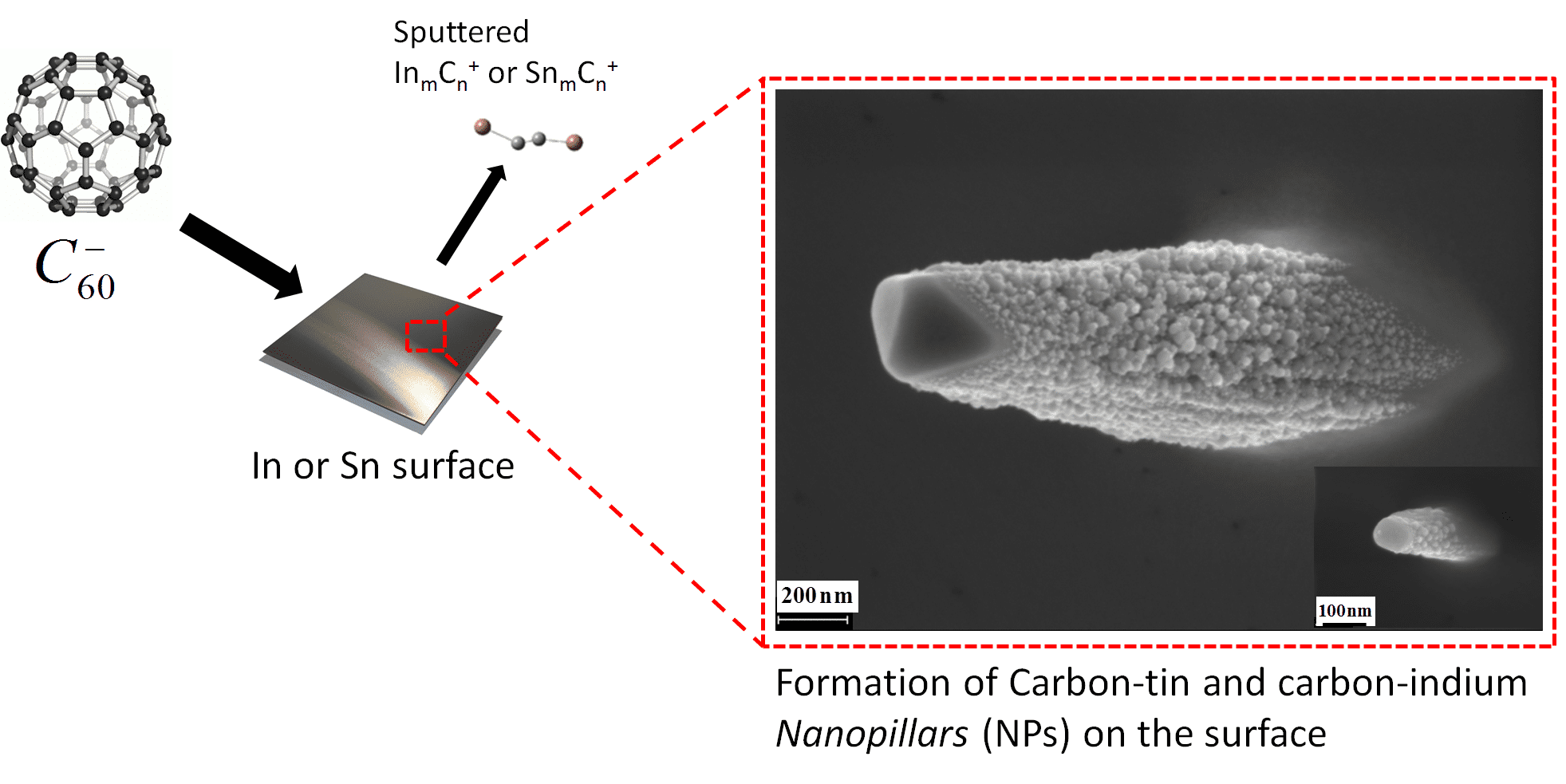
FORMATION OF TIN-CARBON AND INDIUM-CARBON CORE-SHELL NANOPILLARS BY keV SURFACE IMPACT WITH IONS – A CASE OF COMPLETELY IMMISCIBLE ELEMENTS
Reactive ion-surface interactions constitute an efficient way for impact synthesis of various species and thin films. By overcoming activation barriers, usually encountered under equilibrium conditions, one may produce novel compounds, either as gas phase species or at the surface as ultra-thin films or nanoparticles. We use C60- projectile ions in the high energy regime. By doing so, we can induce several types of interactions that would not occur under other conditions due to the high energy density and carbon surface density provided to the impact zone, within a nanovolume of ~2x2x2 nm3.
In the present work collisional interactions between C60- and soft post transition metals which do not form carbides in the bulk (In, Sn) were studies. The bombarded surface was analyzed via electron microscopy and spectroscopy methods. The formation of unique nanostructures shaped as core-shell hybrid nanopillars (NPs) was observed. NPs recently attracted significant attention due to fact that they constitute suitable building blocks for applications in the semiconductor, electron field emission and electronics and photonics fields. The formation of these nanostructures is somewhat surprising, as NPs were formed after ion impact in the past only from binary materials bombarded with monoatomic inert projectile. Characterization of the properties and composition of the NPs could reveal how carbon atoms react in a non-soluble system environment such as a post transition metal and set the foundations of future use of NPs based applications.

Powered by Eventact EMS